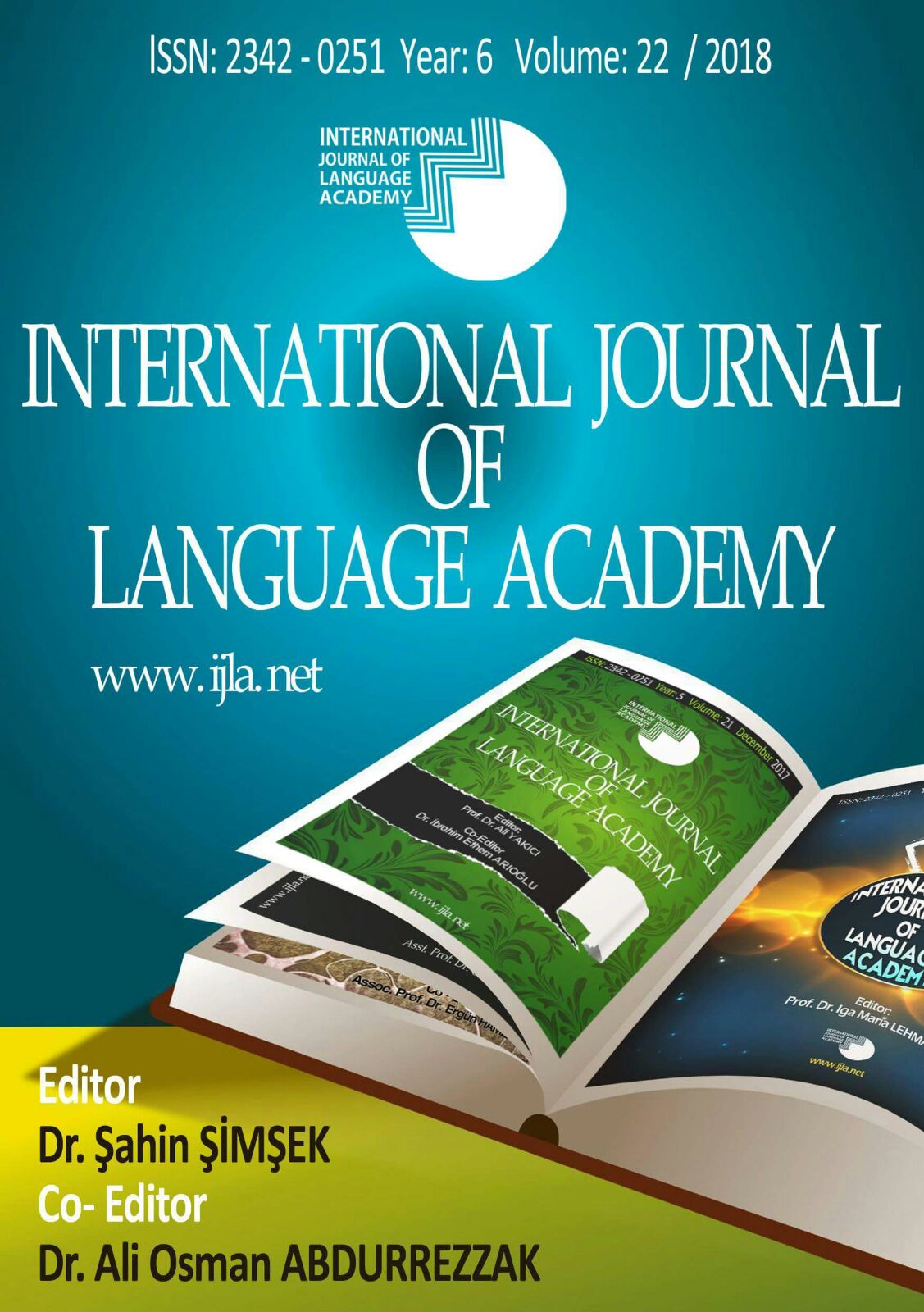Author :
Abstract
Balkanlardaki Türk varlığı IV. yüzyıldan Avrupa Hunlarıyla başlar ve Osmanlı ile devam eder. Özellikle Fatih Sultan Mehmet döneminde Bosna ve Hersek bölgesinde Türk dilinin yaygınlaştığı görülür. İstanbul’un Fethinden sonra Türkçenin edebi bir dil olarak gelişme göstermesi, Bosna’da da etkisini gösterir. Özellikle Boş-nakların eğitim aldığı medreselerde Türkçe, Arapça ve Farsça dersler verilir. Bosna’da çok sayıda Türkçe dergi çıkması, bu coğrafyada çok güçlü Divan şâirlerinin olması ve konuşulan günlük dilde Türkçe sözcüklerin fazla-lığı, bu dilin kültürel anlamda sağlam bir yapıya sahip olduğunu gösterir. Günümüzde Türkçenin dünyanın her yerinde artan prestiji, sosyal, siyasi ve ekonomik bakımdan pozitif bir niteliğe sahip olması, bu dile olan ilgiyi de artırmıştır. 2009 yılından itibaren kurulan Yunus Emre Enstitüleri, bugün 40’tan fazla ülkede etkin bir şekilde Türkçenin öğretildiği merkezlerdir. Mostar ve civarında da Yunus Emre Enstitüsü, Dzemal Bijedic Üniversitesi Türk Dili ve Edebiyatı Bölümü ve Tercihim Türkçe projeleriyle Türkçenin hızlı bir şekilde yayıldığı gözlenmek-tedir. Yabancılara Türkçe Eğitimi’nin farklı bir eğitim metoduna sahip olması gerektiği herkesin üzerinde uzlaş-tığı bir konudur. Bu konuda yıllardan beri, çeşitli çalışmalar sürdürülmektedir. Teknolojinin ve bilginin çok hızlı eskidiği günümüzde yabancı dil öğretiminde klasik metotlardan ziyade çağdaş ve teknolojik donanımlarla des-teklenen bir eğitim, çok daha etkili sonuçlar verecektir. Bu çalışmada, Mostar ve civarında Türkçe öğretiminin durumu ele alınarak çağdaş yöntemlerle kaliteli ve sonuç alıcı eğitim üzerinde durulacaktır.
Keywords
Abstract
The presence of Turks in Balkans started with European Huns in IV.century and continued with the Ottoman Empire. The use of Turkish language proliferated in Bosnia and Herzegovina regions particularly in the era of Fatih Sultan Mehmet. The advancement of Turkish as a literary language following the Conquest of İstanbul had repercussions on Bosnia as well. Turkish, Arabic and Persian courses were given particularly in madrasas where Bosnian people had education. Publication of a good number of Turkish journals in Bosnia, powerful Divan poets in this geography and high number of Turkish words in daily language show that this language has a sound structure in cultural sense. Increasing prestige, social, political and economic quality of Turkish all around the world today has increased the interest to this language. Yunus Emre Institutes, founded since 2008, are the centers for teaching Turkish effectively in more than 40 countries today. Yunus Emre Institute, Department of Turkish Language and Literature at Dzemal Bijedic University and Tercihim Türkçe (I prefer Turkish) projects helped rapid propagation of Turkish. There is a consensus on the fact that Teaching Turkish as a Foreign Language must have a unique education method. Various studies have been conducted on this topic for many years. In our day when technology and information outdate too fast, a foreign language education equipped with modern and technologic means will offer much more efficient outcomes rather than classical methods.This study touches upon quality and outcome-based education encompassing modern methods through Turkish language education in Mostar and near region.





